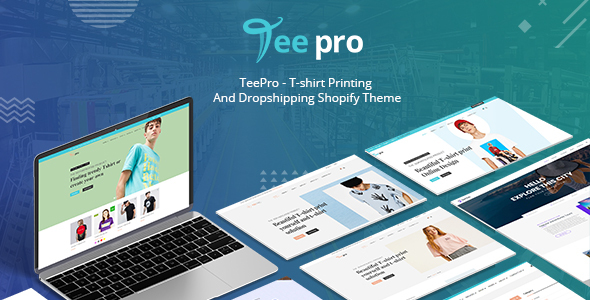In the rapidly evolving landscape of e-commerce, building a successful marketplace demands more than just an attractive website – it requires a strategic approach and a powerful theme that can cater to the unique needs of both customers and vendors. Yvon Laprise, the visionary founder of www.htdansmazone.com in Canada, understood this critical factor and set out to find the perfect solution to transform his marketplace into a thriving hub for online shoppers and sellers...
In today's dynamic and competitive digital landscape, the success of an online marketplace hinges on a robust platform that offers a seamless experience for both vendors and customers. Salim Chabour, a visionary entrepreneur, embarked on a mission to create a thriving multi-vendor marketplace, https://www.interdiscount.ca/, catering to the diverse needs of Canadian consumers. However, the journey was rife with challenges, from designing an intuitive interface to integrating efficient multi-vendor capabilities. To overcome these hurdles and realize...
In this comprehensive and compelling case study, we delve into the remarkable success story of Shoaib Shaikh, a visionary web developer and Managing Director of nirvanaentertainment, a prominent marketplace business based in Mumbai, India. Our in-depth exploration highlights the pivotal role played by Netbase JSC's revolutionary MultiStores WordPress Theme Support Multiple Stores in transforming Shoaib's marketplace venture. Throughout this study, we'll delve into the challenges he faced, the impactful solution provided by Netbase JSC, and...
In today's dynamic digital landscape, a captivating online presence is paramount for businesses seeking to attract and retain customers. Netbase JSC, a distinguished software development company, demonstrated their prowess in this realm through their collaboration with Ayna Ajans, a leading printing solutions provider. In this comprehensive case study, we delve into the project's intricacies, highlighting how Netbase JSC's innovative approach helped Ayna Ajans overcome their challenges and achieve remarkable results. Client Profile: Printing Solutions Provider...
BizGyft, an emerging printing business based in Washington, USA, embarked on a journey to revolutionize their operations and online presence. To achieve this, they partnered with Netbase JSC, a trusted software development company specializing in E-commerce solutions. In this case study, we will delve into how Netbase JSC's Magento PrintMart Website Theme, coupled with an Online Design Package, helped BizGyft improve their business and enhance their customer experience. Client Profile: Unlocking the Potential of BizGyft...
MD. Advertising, a leading printing company located at 17-1 Jalan Sultan Yahya Petra, Kuala Lumpur, faced significant challenges in enhancing its online presence and attracting new customers. In this comprehensive case study, we delve into how Netbase JSC, a renowned software development company, collaborated with MD. Advertising to implement the WordPress Printshop theme, resulting in a transformative digital experience that revolutionized the printing business. Client Profile: A Leading Printing Company in Kuala Lumpur MD. Advertising is...
Indieprint.com.au, led by Craig Bailey, is a prominent digital printing company based in Melbourne, Australia. As the printing industry grew increasingly competitive, Craig sought innovative solutions to differentiate his business and offer a personalized experience to his customers. In pursuit of excellence, he collaborated with Netbase JSC, a leading software development company, to implement the Woocommerce Product Designer plugin on his website. Craig had a clear vision of elevating his e-commerce platform to provide customers...
Dany, a visionary web developer and a prominent printing services provider in Dubai, UAE, embarked on a journey to redefine the digital printing experience for his esteemed customers. His company aimed to revolutionize the printing industry by offering a unique blend of creativity and customization. With a growing clientele seeking personalized printing solutions, Dany realized the need for a powerful and user-friendly online design tool. It was evident that traditional printing methods were no...
In this compelling case study, we delve into the inspiring success story of Rajesh Mudaliar, an ambitious and visionary developer working in an esteemed IT company located in Ahmedabad City, India. As an enterprising business owner in the fiercely competitive T-shirt printing industry, Rajesh set his sights on building a remarkable online printing website using TEEPRO - Woocommerce Custom T-Shirt Designer WordPress Theme, a premier theme on Themeforest. This extensive case study vividly showcases...
In the dynamic world of web development, Aceng M, a highly skilled web developer and freelancer, embarked on a mission to create a transformative online printing platform. With the goal of providing customers with a seamless design experience and a hassle-free checkout process, Aceng M faced a significant challenge. However, his determination led him to discover the perfect solution in the WordPress printshop theme package from Netbase JSC. This comprehensive case study delves into...
About Ecommerce trends Ecommerce Topics
The ecommerce industry is constantly evolving, and keeping up with the latest trends is essential for staying competitive and growing your business. From personalization and mobile optimization to artificial intelligence (AI) and social commerce, there are several key trends that ecommerce businesses need to be aware of to stay ahead of the curve. In this article, we will explore some of the essential ecommerce trend topics for the ecommerce community.
Personalization in Ecommerce
Personalization is a critical component of the ecommerce shopping experience. Personalized experiences help build customer loyalty and improve engagement. According to a report by eMarketer, 56% of shoppers are more likely to return to a site that recommends products, and 58% are more likely to buy something recommended based on their past purchases.
There are several types of personalization strategies that ecommerce businesses can use, such as product recommendations, targeted messaging, and dynamic content. Examples of ecommerce businesses implementing personalization successfully include Amazon and Netflix.
One of the best ways to implement personalization is through a recommendation engine, which can help customers discover products that are tailored to their interests and preferences. Recommendation engines use machine learning algorithms to analyze customer data, such as purchase history, search history, and clickstream data, to generate personalized product recommendations. By using a recommendation engine, ecommerce businesses can provide a more personalized shopping experience and increase customer loyalty.
Mobile Ecommerce
Mobile ecommerce is becoming increasingly important, as consumers continue to shift their purchasing habits to mobile devices. According to a report by eMarketer, mobile ecommerce is expected to account for nearly 73% of all ecommerce sales by 2021.
To optimize their ecommerce stores for mobile devices, businesses need to prioritize mobile design and ensure their site is mobile-responsive. Best practices for optimizing ecommerce stores for mobile devices include simplifying the checkout process, using large and readable fonts, and optimizing images and videos for mobile devices.
One of the best ways to optimize for mobile is by using a mobile-first design approach. Mobile-first design is a design philosophy that prioritizes designing for the smallest screen first, then scaling up to larger screens. By designing for mobile first, ecommerce businesses can ensure that their site is optimized for the smallest and most common screen size, leading to a better overall user experience.
Artificial Intelligence (AI) in Ecommerce
AI is transforming the ecommerce industry, helping businesses automate routine tasks and personalize the shopping experience. AI-powered chatbots, product recommendations, and fraud prevention are just a few examples of how ecommerce businesses are using AI to improve customer experiences and increase efficiency. According to a report by Research and Markets, the global AI in retail market size is expected to grow from $994 million in 2020 to $5.43 billion by 2026.
Examples of ecommerce businesses using AI successfully include Sephora and Walmart.
One of the best ways to implement AI in ecommerce is through chatbots, which can help businesses automate customer service tasks and provide customers with personalized recommendations. Chatbots use natural language processing and machine learning to understand customer inquiries and provide relevant responses. By using chatbots, ecommerce businesses can improve customer satisfaction and reduce response times.
Social Commerce
Social commerce is the integration of social media and ecommerce, allowing consumers to shop directly on social media platforms. Social commerce is becoming increasingly important, as social media platforms continue to grow in popularity and influence. According to a report by eMarketer, social commerce sales in the US are expected to reach $36.62 billion by 2021.
Examples of social media platforms for ecommerce businesses include Facebook, Instagram, and Pinterest. Best practices for social media marketing for ecommerce businesses include creating engaging content, leveraging influencers, and using social media analytics to measure successOne of the best ways to implement social commerce is through social media advertising, which can help businesses target their ads to specific audiences and increase conversions. Social media advertising uses demographic data and user behavior data to target ads to users who are most likely to engage with the ad and make a purchase. By using social media advertising, ecommerce businesses can reach a wider audience and increase sales.
Subscription-Based Services
Subscription-based services are becoming increasingly popular in the ecommerce industry, offering customers a recurring and convenient way to purchase products and services. Benefits of offering subscription-based services include predictable revenue streams and increased customer loyalty. According to a report by McKinsey, subscription ecommerce sales have grown by more than 100% per year over the past five years.
Challenges of offering subscription-based services include customer churn and the need for ongoing product development. Examples of ecommerce businesses offering subscription-based services include Birchbox and Dollar Shave Club.
Augmented Reality (AR) and Virtual Reality (VR) in Ecommerce
AR and VR are changing the ecommerce industry, offering customers immersive experiences that allow them to visualize products in real-world environments. AR and VR are particularly useful for ecommerce businesses selling products that require visual inspection, such as furniture and clothing. According to a report by MarketsandMarkets, the global AR and VR market size is expected to grow from $12.0 billion in 2020 to $72.7 billion by 2026.
Examples of ecommerce businesses using AR and VR successfully include IKEA and Warby Parker.
One of the best ways to implement AR and VR in ecommerce is through virtual try-ons, which allow customers to visualize products in real-world environments. By using AR and VR for virtual try-ons, ecommerce businesses can improve the customer experience and reduce returns.
Green Ecommerce
Sustainability and environmental responsibility are becoming increasingly important to consumers, and ecommerce businesses need to take steps to reduce their environmental impact. According to a report by Shopify, 75% of consumers are willing to pay more for sustainable products.
Strategies for making ecommerce businesses more sustainable include using environmentally-friendly packaging, reducing energy consumption, and using sustainable materials. Examples of ecommerce businesses implementing green initiatives successfully include Patagonia and TOMS.
One of the best ways to implement green ecommerce is by using eco-friendly packaging, which can reduce waste and improve brand reputation. By using eco-friendly packaging, ecommerce businesses can reduce their environmental impact and improve customer loyalty.
Voice Commerce
Voice commerce is a rapidly growing trend, with the rise of smart speakers and voice assistants. According to a report by eMarketer, voice commerce sales in the US are expected to reach $19 billion by 2022.
To optimize ecommerce stores for voice search, businesses need to prioritize conversational content, optimize product descriptions for voice search, and ensure their site is mobile-responsive. Best practices for optimizing ecommerce stores for voice search include creating conversational content, using natural language, and optimizing for long-tail keywords.
Conclusion
Staying current with ecommerce trends is essential for ecommerce businesses to stay competitive and grow. From personalization and mobile optimization to AI and social commerce, ecommerce businesses need to be aware of the latest trends and adapt to the changing landscape. By implementing these trends and best practices, ecommerce businesses can provide a better customer experience, increase conversions, and improve their bottom line.
Recently, we discovered how client loving working with us by their 5 star recommedation






Top










